Past Presidents of Weber State University
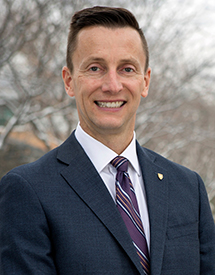
Brad Mortensen
(2018-2025)
Brad Mortensen
(2018-2025)
Over twenty-one years at Weber State, including nearly seven as president, Brad Mortensen advanced initiatives that expanded access, strengthened student success, and removed unnecessary barriers that often stand between students and their goals. His leadership championed innovative enrollment pathways, strengthened partnerships with industry and communities, and elevated affordable, workforce-aligned opportunities for students across Utah.
Before becoming a university president, Mortensen led collaborative efforts in public policy, advancement, economic development, and student success. His background includes service in the Utah System of Higher Education and the Governor’s Office of Planning and Budget.
President Mortensen also holds a Ph.D. in educational leadership and policy from the University of Utah, master’s degree in public administration from Syracuse University’s Maxwell School of Citizenship and Public Affairs, and a bachelor’s in political science from Utah State.. He and his wife, Camille, are parents of four and proud new grandparents, with family roots in Cache Valley that stretch back for generations.

Charles A. Wight
(2013-2018)
Charles A. Wight
(2013-2018)
Charles A. Wight, the 12th president of Weber State University, served from 2013 to 2018.
Wight focused on a variety of presidential priorities for WSU, including keeping college affordable; maintaining beautiful and sustainable campuses; fostering community partnerships; expanding the diversity of the university to reflect its community; and leveraging innovative teaching methods to promote student success.
Among his accomplishments were the signing of a College Town charter with Ogden City and leading the university during the public phase of its Dream 125 comprehensive fundraising campaign. Under Wight's guidance, the university expanded eligibility for its Dream Weber program, which provides up to eight semesters of full tuition and fees for eligible students.
Prior to his appointment at Weber State, Wight served three years as dean of the Graduate School at the University of Utah, where he also served in other administrative and faculty roles since 1984. A physical chemist, he researched the chemistry of explosives and propellants. He is the co-author of more than 150 peer-reviewed publications, three patent filings and two books. Wight was named an Alfred P. Sloan Research Fellow and was designated a fellow of the American Association for the Advancement of Science. He is a member of the Phi Kappa Phi Honor Society. Wight received the University of Utah's 1985 Outstanding Teaching Award in Chemistry from students and also received the R.W. Parry Teaching Award in Chemistry.
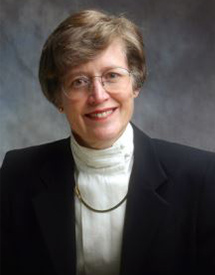
F. Ann Millner
(2002-2012)
F. Ann Millner
(2002-2012)
F. Ann Millner became the 11th president of Weber State University in 2002. When appointed to that post, she was no stranger to Weber State, having worked there as an educator and administrator for two decades in university advancement, community partnerships and continuing education.
Under President Millner's leadership, Weber State University was dedicated to providing teaching and learning experiences designed to shape the next generation of responsible, educated citizens through personal interaction with faculty, staff and alumni as well as community friends and partners.
During her tenure as president, Weber State faculty and staff completed a successful 10-year reaccreditation effort; enhanced educational excellence through a focus on teaching and learning, student engagement, service learning and undergraduate research; created a campus-wide institutional planning initiative; opened a new campus in Davis County; revitalized facilities on the Ogden campus; and completed a successful $90 million capital campaign.
President Millner was also engaged with numerous educational and community organizations, including Intermountain Health Care; Air University Board of Visitors; NCAA Division I Board and Executive Committee; the Ogden/Weber Chamber of Commerce; the Weber Economic Development Corporation; the Council of State Representatives of the American Association of Colleges and Universities; the SunGard SCT Executive Advisory Group; the Utah Campus Compact; the Wells Fargo Community Board; and the Utah Defense Alliance.
President Millner holds degrees from the University of Tennessee, Texas State University and Brigham Young University. She is a member of Phi Kappa Phi.
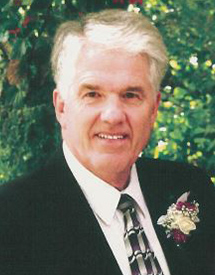
Paul H. Thompson
(1990-2002)
Paul H. Thompson
(1990-2002)
Paul Thompson became the 17th president of Weber in 1990, shortly before the school became Weber State University on January 1, 1991.
Thompson was born and raised in Warren, Utah, located west of Ogden. He attended Weber State in 1957-58, and received his bachelor's degree from the University of Utah in 1964. He attended Harvard Graduate School of Business Administration, where he earned a master's degree and then a doctorate degree in 1969.
Prior to becoming president of Weber State, Thompson was Vice President of Development and University Relations at Brigham Young University. He was the dean of the Marriott School of Management at BYU from 1984-89.
While president, Thompson also served as vice chairman of the Governor's Economic Development Board and as a member of numerous advisory boards.
During his tenure, Thompson dealt with budget woes and a troubled athletic program that garnered national attention. He led WSU through a time of significant growth, attracted new endowments and oversaw many building and infrastructure improvements on campus.
Thompson was committed to building positive relationships between the university and its surrounding communities, along with finding ways to meet their educational needs. These efforts included laying the foundation for the Weber State University Davis campus in Layton.
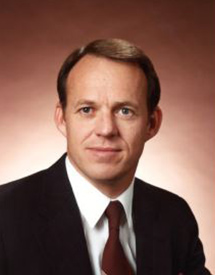
Stephen D. Nadauld
(1985-1990)
Stephen D. Nadauld
(1985-1990)
Stephen D. Nadauld was born in Idaho Falls, Idaho. He graduated from Brigham Young University, then went to Harvard Business School for his MBA. At Harvard, he belonged to the East Coast Championship rugby team.
Nadauld went to University of California at Berkeley to be an instructor of finance, where he was named “outstanding teacher of the year.” In 1985 he became president of Weber State College and served a year as chairman of the Big Sky Council of Presidents.
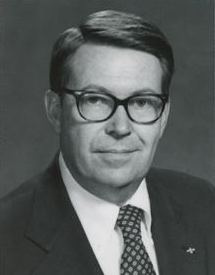
Rodney H. Brady
(1978-1985)
Rodney H. Brady
(1978-1985)
Rodney H. Brady graduated from University of Utah with a bachelor's degree in accounting and an MBA. He attended Harvard Business School for his doctorate degree.
According to John Sillito in “Weber's Principals and Presidents,” Brady emphasized the importance of making Weber State College a superior undergraduate college by stressing teaching excellence.
In his last year as president, the Weber State College Institutional Council awarded him with the status of President Emeritus.
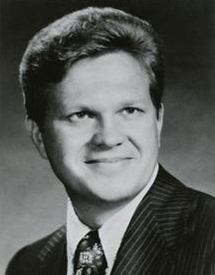
Joseph L. Bishop
(1972-1978)
Joseph L. Bishop
(1972-1978)
Joseph L. Bishop attended Brigham Young University and earned bachelor's and master's degrees in Spanish. While in office at Weber, he wrote many articles for professional publications. It was during Bishop's term that the Dee Events Center was dedicated. At the end of his tenure, he received an honorary Doctor of Humanities degree from Weber State College.
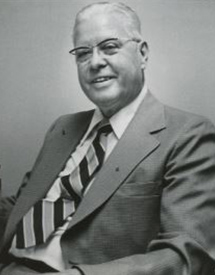
William P. Miller
(1953-1972)
William P. Miller
(1953-1972)
William P. Miller was influenced by Aaron W. Tracy, who said Miller should go into education. Miller served for 18 years; the longest tenure of any president at Weber.
According to John Sillito in “Weber's Principals and Presidents,” during his years at Weber, Miller not only saw the college grow in enrollment, course offerings and faculty size, but guided the school during its transition from a junior to a four-year college.
In 1979, the school's administration building was named in Miller's honor.
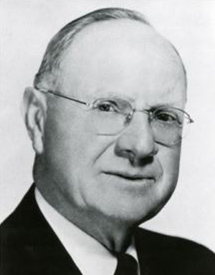
H. Aldous Dixon
(1937-1953)
H. Aldous Dixon
(1937-1953)
Henry Aldous Dixon received an A.B. degree from Brigham Young University in 1914 and a master's degree from the University of Chicago.
Dixon joined the faculty of Weber Academy in 1914 and taught until he was selected as president in 1919. His first term at Weber Academy lasted one year. In 1937, he received an Ed.D. from the University of Southern California and returned to the presidency at Weber College. His second term spanned 16 years and was during World War II.
According to John Sillito in “Weber's Principals and Presidents,” the college received national recognition for its technical division and war effort work, and oversaw the beginning of the construction of the new campus and the initial move to the present site of the college in 1952.
While Dixon was president, enrollment nearly tripled. Dixon left Weber in 1953 to accept the presidency of Utah State Agricultural College in Logan.

Leland H. Creer
(1935-1937)
Leland H. Creer
(1935-1937)
Leland H. Creer graduated from the University of Utah with his bachelor's and master's degrees. He received his doctorate in history at the University of California.
His goal for Weber was to make the school more professional. According to John Sillito in “Weber's Principals and Presidents,” he did this by instituting a new departmental structure, sabbatical leaves and other measures, and a reappraisal of the college's curricula and scholastic standards. Creer established an administrative cabinet consisting of the President, Registrar, Treasurer, Dean of Instruction and Dean of Women that met on a weekly basis. He also worked to improve the college library and sought to improve faculty and staff salaries.

Aaron W. Tracy
(1922-1935)
Aaron W. Tracy
(1922-1935)
Aaron W. Tracy was President of Weber College for 13 years. He attended Weber Academy and served as student body president. He thought he wouldn't be able to stay in school because of financial reasons, but he was able to remain because David O. McKay (the president at the time) let him live and work at his house.
During Tracy's tenure as president, the school endured financial difficulties. His points of focus while in service included liberal education and vocational programs.
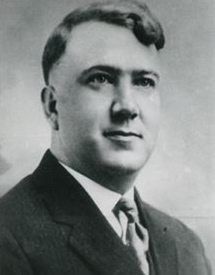
Joel E. Ricks
(1920-1922)
Joel E. Ricks
(1920-1922)
Joel E. Ricks was born in Rexburg, Idaho. He graduated from the University of Utah in 1912. In 1917, he became head of the history department at Weber College. He was appointed president in 1920. His priorities as president included building up the college library and the athletic programs. He continued to teach history while serving as president.
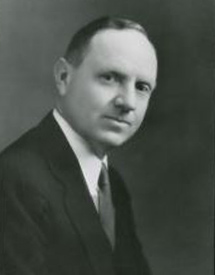
H. Aldous Dixon
(1919-1920)
H. Aldous Dixon
(1919-1920)
Henry Aldous Dixon received an A.B. degree from Brigham Young University in 1914 and a master's degree from the University of Chicago.
Dixon joined the faculty of Weber Academy in 1914 and taught until he was selected as president in 1919. His first term at Weber Academy lasted one year. In 1937, he received an Ed.D. from the University of Southern California and returned to the presidency at Weber College. His second term spanned 16 years and was during World War II.
According to John Sillito in “Weber's Principals and Presidents,” the college received national recognition for its technical division and war effort work, and oversaw the beginning of the construction of the new campus and the initial move to the present site of the college in 1952.
While Dixon was president, enrollment nearly tripled. Dixon left Weber in 1953 to accept the presidency of Utah State Agricultural College in Logan.
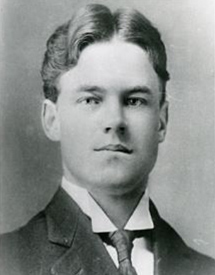
Owen F. Beal
(1917-1919)
Owen F. Beal
(1917-1919)
Owen F. Beal graduated from Snow College in 1904 and attended the University of Utah for his bachelor’s and master’s degrees in sociology. Beal served as principal of Wasatch and Moroni high schools, as well as head of the economics and sociology department at the Brigham Young College in Logan. When coming to Weber Academy, he was known as Principal, but a year later the title was changed to President. Weber Academy’s name also changed to Weber Normal College. Beal left Weber Normal College after four years to pursue his doctorate degree at Columbia University.
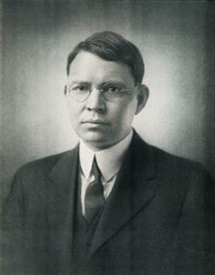
James L. Barker
(1914-1917)
James L. Barker
(1914-1917)
James L. Barker received his education from the University of Utah at the age of 15. Barker taught at Ogden High School, then moved to Provo to become chairman of the department of modern languages at Brigham Young University before returning to Ogden to accept the position of principal of Weber Academy. He organized the school’s first newspaper, the Weber Herald.

William W. Henderson
(1910-1914)
William W. Henderson
(1910-1914)
William W. Henderson graduated from Brigham Young College in Logan in 1903. He did graduate work at the University of Chicago and completed his master’s degree at Cornell University. He taught zoology at Brigham Young College in Logan.
According to John Sillito in “Weber’s Principals and Presidents,” Henderson was selected to succeed Principal McKendrick because of his experience as an assistant to the president of the Logan school and because of the personal efforts of David O. McKay.
As principal, Henderson was known for building lasting relationships with students, faculty and the community. After four years at Weber, he became president of Brigham Young College.

Wilford M. McKendrick
(1908-1910)
Wilford M. McKendrick
(1908-1910)
Wilford M. McKendrick was originally from Tooele and graduated from Brigham Young Academy in Provo. He taught math at Brigham Young Academy and then at Weber Academy. He became principal following the tenure of his friend David O. McKay.
According to John Sillito in “Weber’s Principals and Presidents,” during McKendrick’s year of service, the institution’s name was changed to Weber Academy in response to the Weber Stake of the LDS Church being divided into three stakes.”

David O. McKay
(1902-1908)
David O. McKay
(1902-1908)
David O. McKay graduated as valedictorian from the University of Utah in 1894. After an LDS mission, he taught literature and history at Weber.
According to John Sillito in “Weber’s Principals and Presidents,” during McKay’s tenure as principal, Weber Academy expanded in many ways. McKay oversaw the expansion of the Moench building to increase classroom and laboratory facilities, as well as the publication of a combination yearbook and literary magazine known as the Acorn.
McKay was called to serve on the Council of Twelve Apostles for the LDS church in 1906. He became the ninth president of the LDS church in 1951.
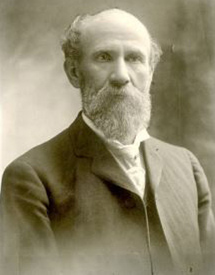
Louis F. Moench
(1894-1902)
Louis F. Moench
(1894-1902)
Louis F. Moench emigrated from Germany to the United States as a child. He later joined the Church of Jesus Christ of Latter-day Saints and settled in Salt Lake City.
According to John Sillito in “Weber’s Principals and Presidents,” Moench began teaching in LDS church schools and was an instructor in German, penmanship and drawing at the University of Deseret, later becoming superintendent for Weber County schools. Moench became the first Principal of Weber Academy in the Fall of 1888 and opened classes in January 1889.
Moench organized meeting space and hired faculty and staff. He served a second term, then continued to be a Board of Trustees member until his death in 1916.

George F. Phillips
(1893-1894)
George F. Phillips
(1893-1894)
George F. Phillips was born in Glasgow, Scotland. Raised Catholic, he was baptized into the Church of Jesus Christ of Latter-day Saints by an Ogden missionary. He worked as an associate editor at the Millennial Star, which was published in England. He immigrated to Idaho in 1990 and settled in Bear Lake County. He became a teacher at Brigham Young Academy and moved on to become principal of Weber from 1893-1894. He served as principal for only one year due to political disagreements and financial problems at the school, but remained as a faculty member for a second year.

Emil B. Isgreen
(1892-1893)
Emil B. Isgreen
(1892-1893)
Emil B. Isgreen graduated from Brigham Young University and taught there until he became Principal of Weber Academy in 1892. He was at Weber Academy for only a year, but the school saw continued growth in popularity in Ogden and throughout the region.

Louis F. Moench
(1888-1892)
Louis F. Moench
(1888-1892)
Louis F. Moench emigrated from Germany to the United States as a child. He later joined the Church of Jesus Christ of Latter-day Saints and settled in Salt Lake City.
According to John Sillito in “Weber’s Principals and Presidents,” Moench began teaching in LDS church schools and was an instructor in German, penmanship and drawing at the University of Deseret, later becoming superintendent for Weber County schools. Moench became the first Principal of Weber Academy in the Fall of 1888 and opened classes in January 1889.
Moench organized meeting space and hired faculty and staff. He served a second term, then continued to be a Board of Trustees member until his death in 1916.
